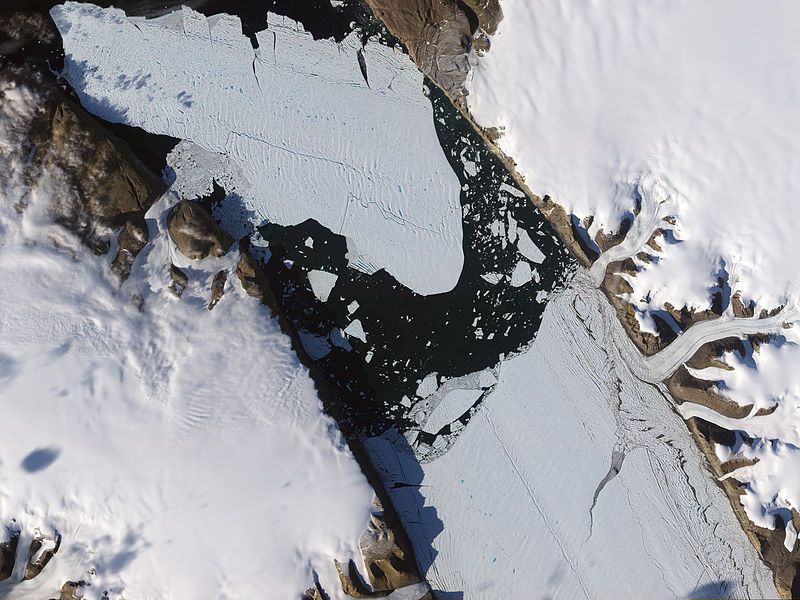Huge ice island breaks off Greenland glacier
A giant iceberg has been formed off the Petermann Glacier in Greenland. The Manhattan size piece of ice is 46 square miles across and is about half the size of the berg formed in 2010 from the same glacier.

A giant iceberg has been formed off the Petermann Glacier in Greenland. The Manhattan size piece of ice is 46 square miles across and is about half the size of the berg formed in 2010 from the same glacier. The glacier is now at a terminus not seen for over 150 years and is likely shorter than it has been for a lot longer than this.
"Northwest Greenland and northeast Canada are warming more than five times faster than the rest of the world," Andreas Muenchow of the University of Delaware says, "but the observed warming is not proof that the diminishing ice shelf is caused by this, because air temperatures have little effect on this glacier; ocean temperatures do, and our ocean temperature time series are only five to eight years long -- too short to establish a robust warming signal."
Muenchow went on say, "The Greenland ice sheet as a whole is shrinking, melting and reducing in size as the result of globally changing air and ocean temperatures and associated changes in circulation patterns in both the ocean and atmosphere,"
"Northwest Greenland and northeast Canada are warming more than five times faster than the rest of the world," Muenchow says, "but the observed warming is not proof that the diminishing ice shelf is caused by this, because air temperatures have little effect on this glacier; ocean temperatures do, and our ocean temperature time series are only five to eight years long -- too short to establish a robust warming signal."
Indeed, more research is needed to understand the habits of the Greenland glaciers. This summer a research ship is set to study the region further, assessing salinity, temperature and ice thickness data over the last 3 years, particularly looking at the effects of the passage of the 2010 iceberg over the region, which has now broken up. It is an excellent opportunity to study this as it has 50 years since the last similar ice island broke off in the region. They are likely to be more common over the coming years as the changes in ocean temperatures alter the region.
